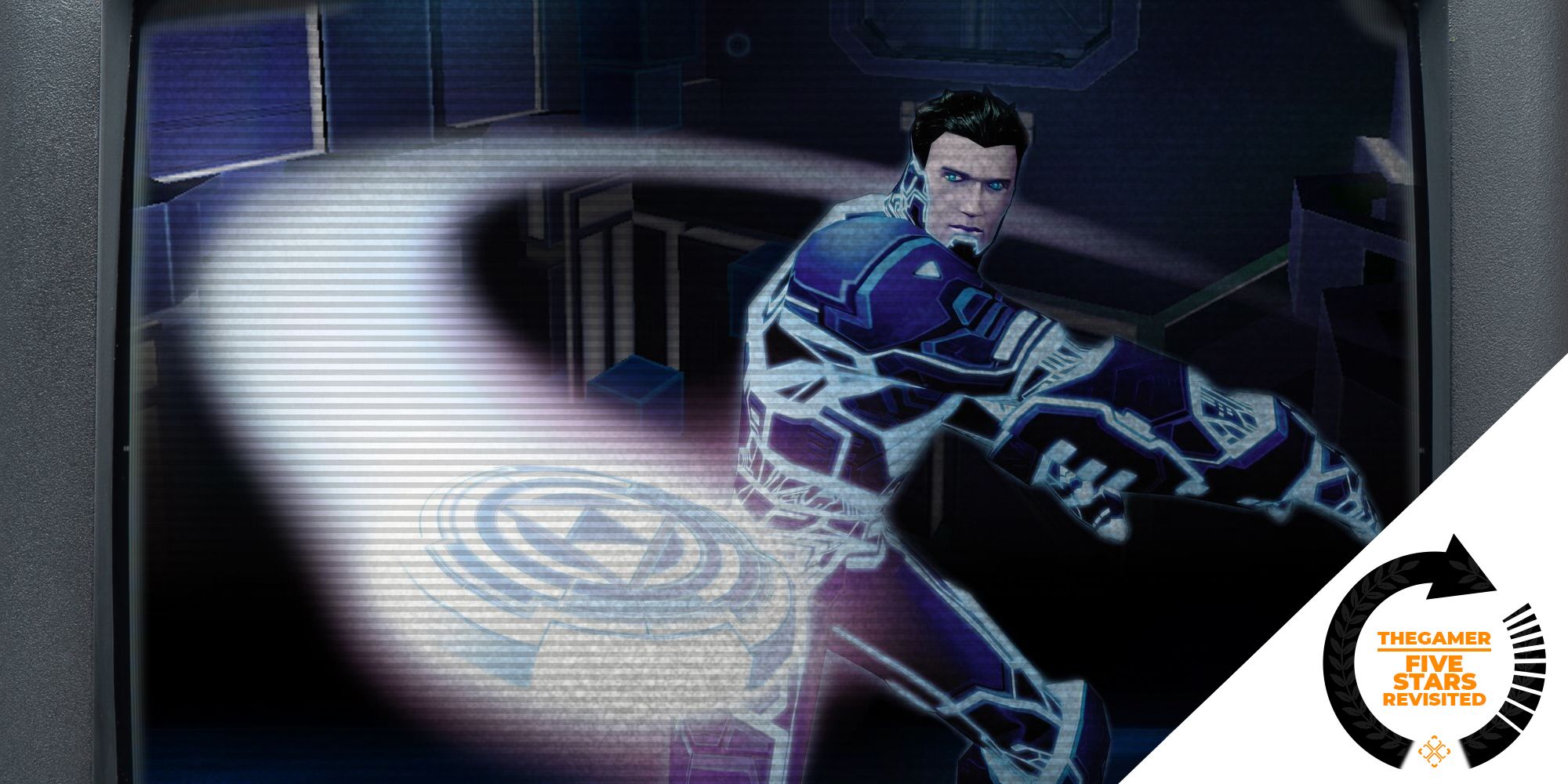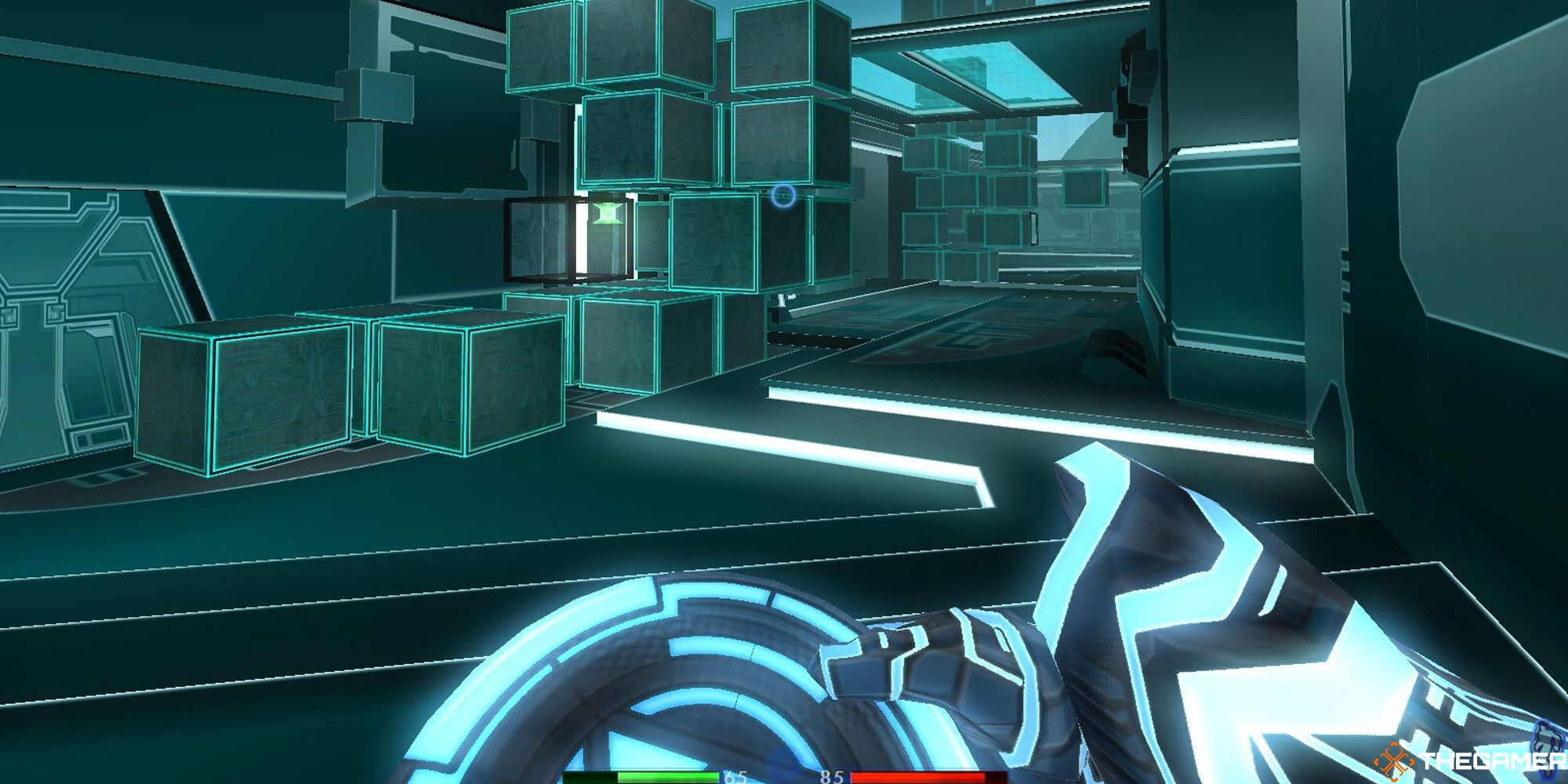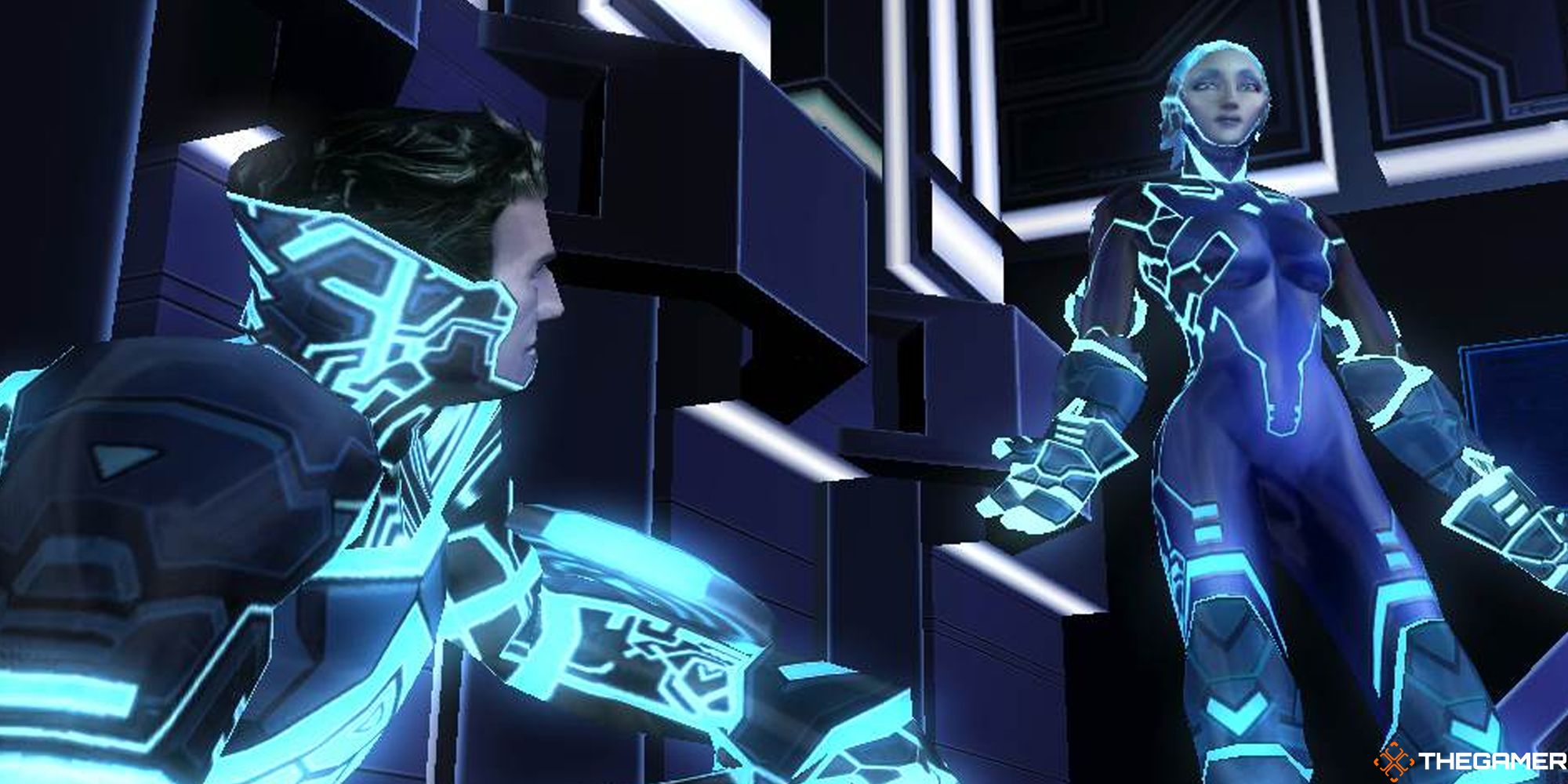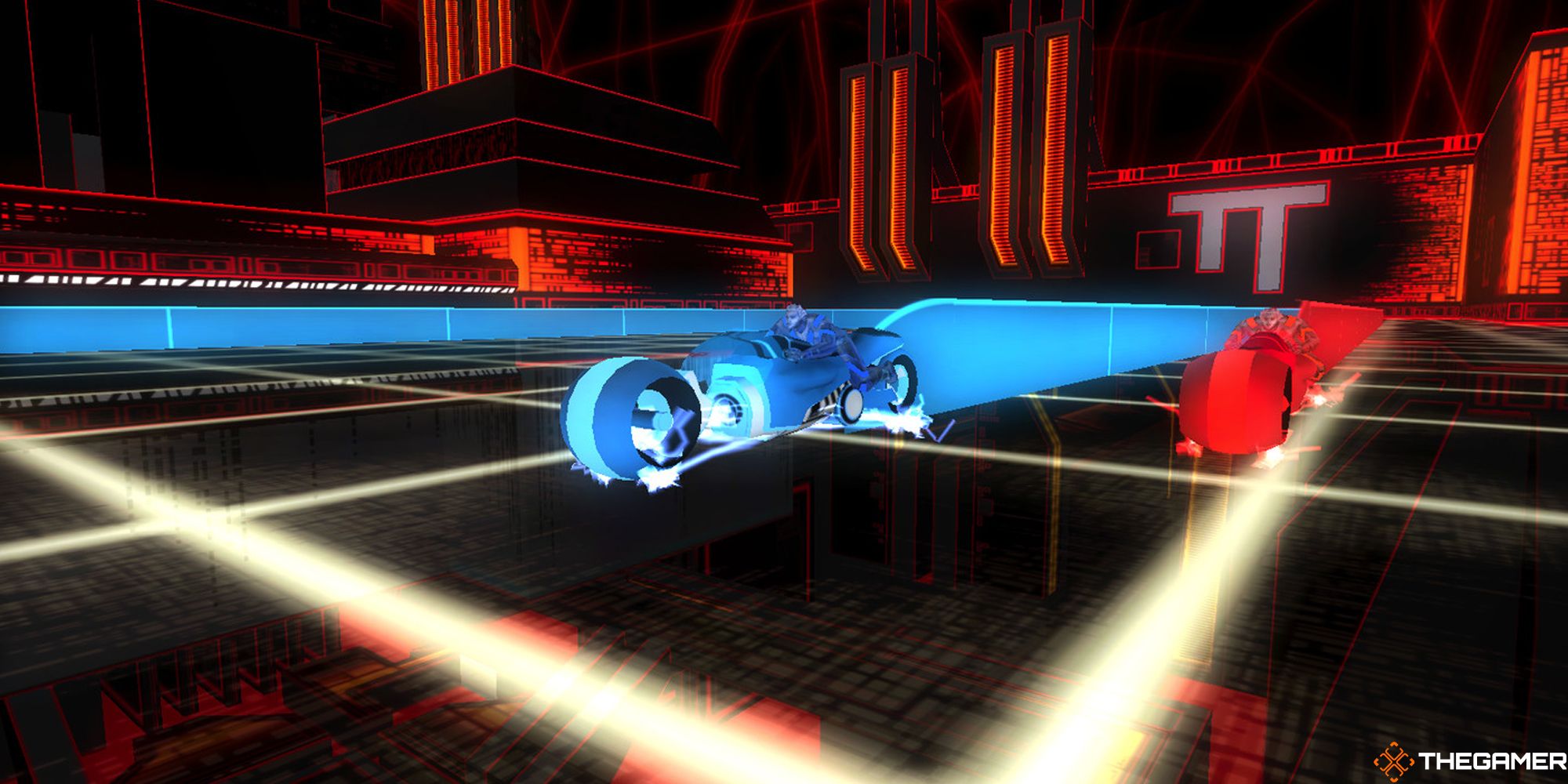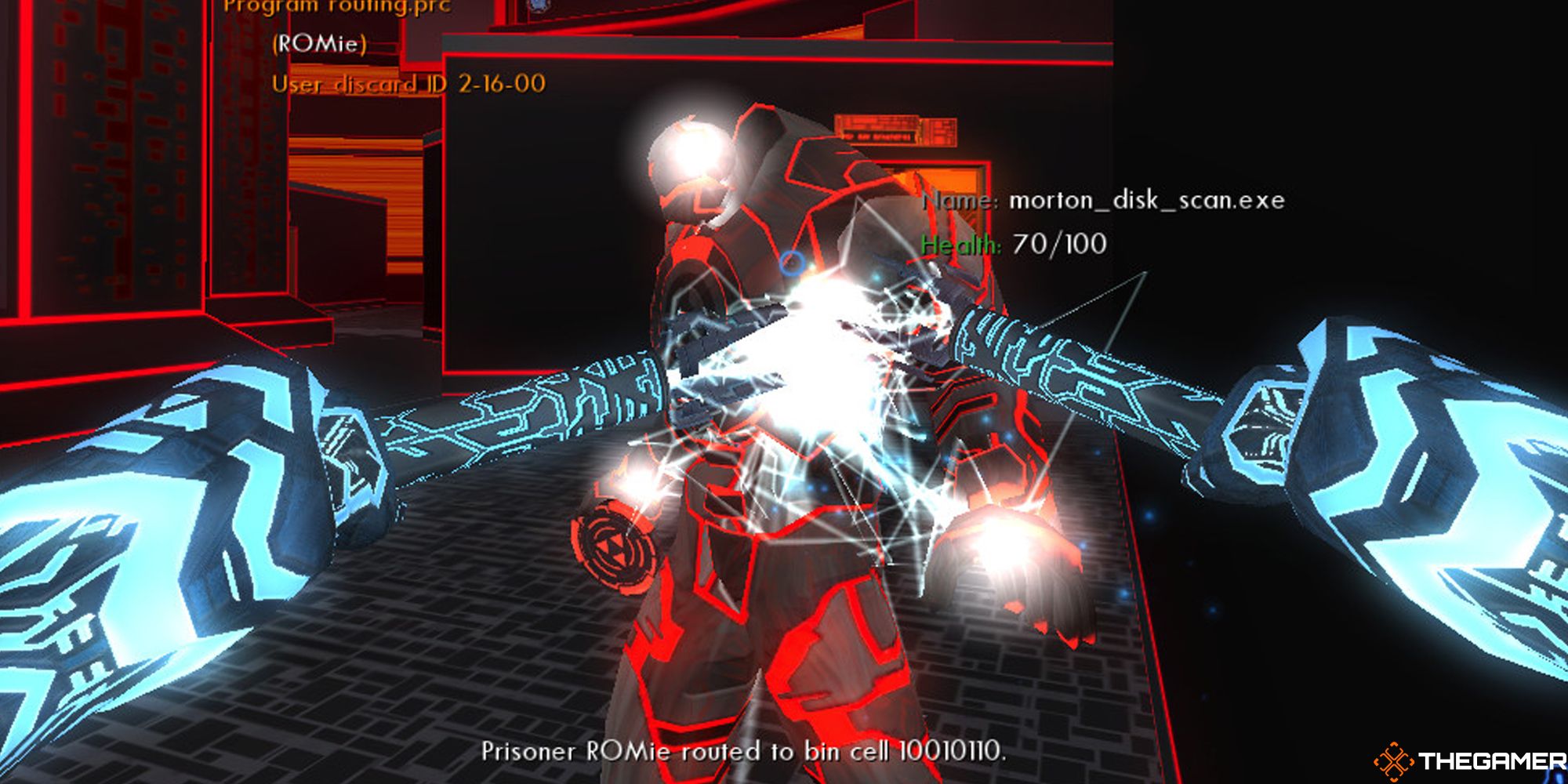This article is part of a series of features where TheGamer looks back on the games it would have given five stars to if we were alive when they came out, meaning games before our glorious birth in 2017.
Tron is one of my favourite movies of all time. Of course, the rotoscoped neon visual style is still the dog’s bollocks even 40 years later, but I also adore Wendy Carlos’ soundtrack, the subtle character moments, and prescient message about the impact – intended or otherwise – programmers have on their creations. In a world where AI bias continues to be a very real issue, Tron feels more and more relevant with each passing day.
It took 21 years for Tron to finally get a sequel with the sublime Tron 2.0, developed by Fear and Shadow of Mordor’s Monolith Productions. Often forgotten these days thanks to the rain-slicked blandness of Tron Legacy, 2.0 was just as forward-thinking as its movie predecessor, giving us a fantastic reimagining of the virtual world combined with immersive sim elements that ensure it’s still worth giving a shot today.
Tron 2.0 follows Jet, a temperamental programmer at Encom, and son of Alan Bradley, creator of the original Tron program. When Alan goes missing, one thing leads to another and Jet is brought into the digital world of Encom’s computer network to hunt down something known as the Tron Legacy Code.
Tron is almost as much about its world as it is the characters running around within it, and updating it for the technology of 2004 must have been a big challenge for Monolith. The key appeal of Tron is that its system wasn’t built for humans – it’s an intricate web of data, giving form to beautiful landscapes and inhabitants that feel utterly alien to outsiders like us.
It was abstract, weird, and incredibly memorable. 2.0 nailed it, while also ensuring its level design was readable to a human player. Geometric shapes form easily identifiable routes through the world, while untamed datascapes begged to be explored just off the beaten path. It retains the spirit of Tron, while also reflecting the grounded necessity of a video game from 2004.
Perhaps the most interesting thing about Tron 2.0’s world design was how willing Monolith was to play around with it. As Jet explores the Encom system, you traverse through high-end workstations, the internet, and even a forgotten machine from the ‘80s. Each one maintains the same basic structure of the digital world, but with tweaks that set them apart – a powerful work system looks slick and flashy, while a segment where Jet is trapped inside a PDA has a much sparser design to reflect the lower specs of the handheld. Copying Tron would’ve been easy, but 2.0 remixes and reworks it in different ways multiple times, which is more impressive.
Although the complex world design was on-point, 2.0 often faltered in its attempt to refresh the series’ iconic lightcycles. Almost everything here takes existing Tron ideas and improves on them, but these just took the core concept of ‘a bike that leaves a trail behind it’ and threw it into frustrating sequences of maze-like level design, unfair AI, and powerups that took it away from the movie’s simplistic beauty. It felt like these sections were just rammed into an otherwise superb campaign purely for the sake of it.
Tron 2.0 is much more than its art direction or wonky light cycles, though. While it isn’t a stealth-driven masterpiece like Thief or Deus Ex, it borrows elements from immersive sims to make it feel ripe for experimenting and exploration. The arsenal of weapons Jet picks up is massive and bizarre, facilitating multiple playstyles: balls of goo that explodes on contact, gloves that fire like SMGs, lightcycle rods that stealthily sap the life from your enemies, and, of course, the classic shot-reflecting disc.
Its upgrade system is equally clever. Instead of being a regular skill tree you unlock stuff for and forget about, Jet’s capacity to hold upgrades changes depending on the system he’s in. Go somewhere high-tech, and you’ll find you can equip more upgrades like higher jumps or resistance to damage. Move through a slower, older system, though, and you’ll need to make careful choices about which upgrades you have the bandwidth to equip. Admittedly, this can cause too much busywork at times as you endlessly try and fit your favourite upgrades in, but it goes a long way to make you think about your playstyle, while also being a nice, flavourful reflection of the world you’re trapped in.
It’s a shame that Tron 2.0 was pretty much dead on arrival. Poor sales led to Buena Vista Interactive dropping all support for it shortly after launch, leaving it to languish for years until Disney finally decided to chuck it up on Steam a few years ago. Fortunately, its small but passionate community has managed to keep 2.0 alive all this time, by offering mods like the essential Killer App, which fixes a long list of bugs, gets it running on modern systems, and even has support for the game’s thrown-out-to-die multiplayer modes.
If any game ever deserved more of a chance, it’s Tron 2.0. It radiated confidence in both its world and gameplay, offering something Tron Legacy, with all its budget and Daft Punk and gross digitally de-aged Kevin Bridges, couldn’t: a faithful yet inventive follow-up to a cult sci-fi classic. It also has no Jared Leto in sight, which immediately puts it ahead of the upcoming Tron: Ares as well.

